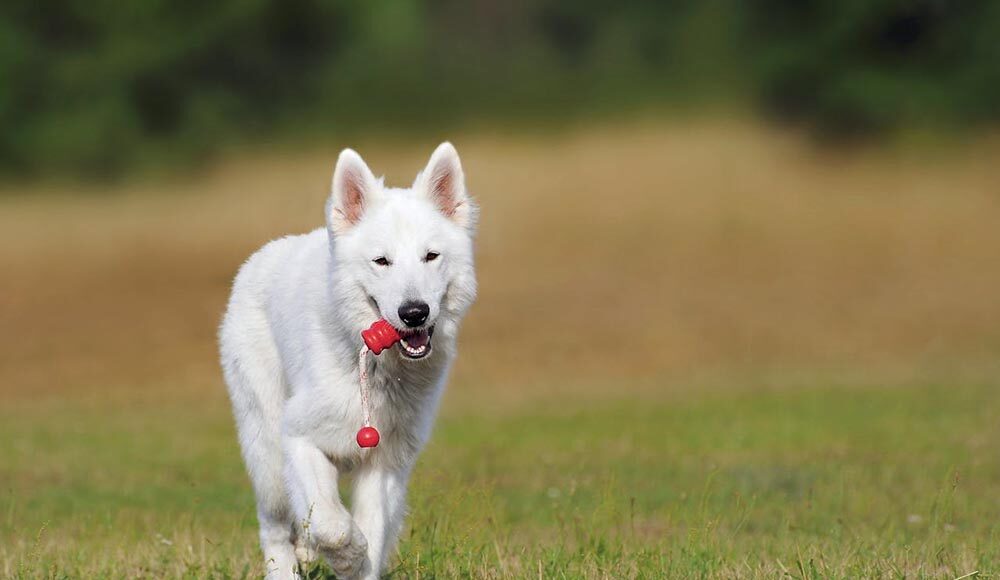Choosing the right toy for your dog can be a delightful yet crucial task. A carefully selected toy can significantly enrich your furry friend’s life, providing entertainment, mental stimulation, and even promoting good dental health.
The goal is to pick the best toy that aligns with your dog’s individual needs, preferences, and play style. This guide will explore the essential factors to consider when selecting dog toys, ensuring your canine companion remains happy, healthy, and engaged.
Understanding the Importance of a Dog Toy
Benefits of Choosing the Best Toy
Choosing the right dog toy goes beyond mere entertainment. Toys help keep your dog physically active, which is essential for their overall health and well-being. Interactive toys and puzzle toys can provide mental stimulation, preventing boredom and destructive behaviors. Toys can help satisfy a dog’s natural instincts, such as chewing and chasing, making them happy and content. The best dog toys will positively impact your dog’s overall quality of life.
Impact on Playtime and Behavior
Playtime is a crucial aspect of a dog’s life, and the toys you choose significantly influence how they play and behave. Toys encourage active play, which helps dogs burn energy and stay physically fit. The best toy for your dog can also reduce anxiety and stress, leading to a calmer and more well-adjusted pet. Picking toys that cater to your dog’s preferences and needs can transform playtime into a positive and enriching experience.
How Dogs Like to Play
Dogs like to play in various ways, depending on their breed, age, and individual personality. Some dogs prefer to chew, while others love to chase or tug. Many dogs enjoy squeaky toys, while some prefer soft toys or plush toys for comfort. Understanding your dog’s unique play style is essential when choosing the right dog toy. By observing how your dog interacts with new toys, you can better cater to their preferences and needs.
Factors to Consider When Picking the Best Dog Toy
Dog’s Breed and Size
When choosing the right toy for your dog, consider their breed and size. Smaller breeds may prefer soft toys or plush toys that are easy to carry and manipulate, while larger breeds, especially those known to be chewers, may need toys that are durable enough to withstand their powerful jaws. For example, a small chihuahua wouldn’t need the same toy as a large Labrador Retriever. Picking toys appropriate for your dog’s size ensures they are safe and enjoyable. Toys can help keep your dog engaged, especially when they are tailored to their specific needs.
Dog’s Age and Activity Level
A dog’s age and activity level are crucial factors in determining the best toy for your dog. Puppies, especially teething puppies, often benefit from teething toys and soft chew toys to soothe their gums. Adult dogs may need more durable rubber toys and interactive toys to provide mental stimulation and prevent boredom. Senior dogs may prefer softer comfort toys or puzzle toys that don’t require excessive physical exertion. Choosing the right toys based on your dog’s life stage ensures they remain happy and healthy. Toys help provide comfort for your furry friend.
Durability and Safety of the Toy
The durability and safety of the dog toy are paramount. Look for toys that are durable enough to withstand your dog’s chewing habits, especially if they are a heavy chewer. Avoid toys made with small parts that could be easily torn apart and swallowed, posing a choking hazard. Toys that are durable and made of non-toxic materials are the safest options. It’s always a good idea to supervise your dog during playtime to ensure they don’t ingest any pieces of the toy. Choosing the right toy ensures your dog’s safety and helps prevent accidents.
Types of Toys for Your Dog
Chew Toys
Chew toys are essential for many dogs, particularly those with a strong chewing instinct. These toys help satisfy a dog’s natural urge to chew, which can prevent destructive behaviors such as chewing on furniture. Chew toys come in various materials, including hard rubber, rope toys, and even edible options. Teething puppies benefit greatly from chew toys designed to soothe their gums. Providing appropriate chew toys can help keep your dog busy and engaged, promoting good dental health. Chew toys are the best dog toy for your furry friend if he or she is prone to chewing.
Interactive Toys
Interactive toys are designed to provide mental stimulation and keep your dog engaged. These toys often require the dog to solve a puzzle or perform a task to receive a reward, such as a treat. Puzzle toys, treat-dispensing toys, and even some squeaky toys fall into this category. Interactive toys can help prevent boredom and reduce anxiety, particularly when you’re not able to provide direct attention. Choosing the right interactive toy can transform playtime into a mentally stimulating and rewarding experience. Toys help keep your dog entertained, especially if your dog loves to solve puzzles.
Fetch Toys
Fetch toys are ideal for dogs who love to chase and retrieve. Tennis balls, frisbees, and durable rubber toys are popular choices for fetch. These toys encourage physical activity and help burn energy. When choosing a fetch toy, consider your dog’s size and chewing habits. Avoid tennis balls if your dog tends to tear them apart, as they can pose a choking hazard if the pieces are swallowed. Fetch toys provide a great way for you and your dog to bond and have fun. Picking toys that encourage exercise is best for your dog.
How to Determine What Your Dog Loves
Observing Playtime Preferences
One of the most effective ways to determine what toys your dog loves is by observing their playtime preferences. Pay close attention to how your furry friend interacts with new toys. Does your dog immediately gravitate towards a particular type of toy, such as a squeaky toy or a chew toy? Do they prefer toys made of hard rubber or softer plush toys? Noting these preferences will help you pick the best toy that aligns with your dog’s individual tastes.
Testing Different Types of Toys
Experimenting with different types of dog toys is crucial for understanding your dog’s unique preferences. Introduce a variety of options, including interactive toys, puzzle toys, rope toys, and even treat-dispensing toys. Observe how your dog reacts to each toy, and note which ones keep your dog engaged the longest. Some dogs prefer the challenge of a puzzle toy, while others are content with a simple stuffed toy. This process helps you pick the best toy by elimination and observation.
Recognizing Signs of Enjoyment
Recognizing signs of enjoyment in your dog can help you identify their favorite toys. Signs of enjoyment may include wagging their tail, eagerly grabbing the toy, and enthusiastically playing with it for an extended period. If your dog seems uninterested or quickly loses interest, it’s a sign that the toy may not be the best fit. Pay attention to your dog’s body language and vocalizations during playtime to gauge their level of enjoyment and choose the toys that bring them the most joy.
Conclusion: Finding the Best Toy for Your Dog
Summary of Key Considerations
Finding the best toy for your dog involves careful consideration of several factors. Your dog’s breed, size, age, and chewing habits all play a role in determining which toys are most suitable. Choosing the right toys also means prioritizing durability and safety to prevent accidents. By observing your dog’s playtime preferences and experimenting with different types of toys, dog owners can identify toys that provide both mental stimulation and physical enjoyment, resulting in a happier and healthier pet. The best dog toys are safe, engaging and appropriate for your dog.
Final Tips for Choosing the Best Toy
For final tips for choosing the right dog toy, always prioritize safety. Look for toys made of non-toxic materials and that are durable enough to withstand your dog’s chewing habits. Avoid toys with small parts that could be torn apart and swallowed, posing a choking hazard. Consider your dog’s individual play style and preferences. If your dog is a heavy chewer, opt for hard rubber toys. If they enjoy puzzle toys, try interactive options that challenge their minds and help prevent boredom. Always supervise your dog during playtime to ensure their safety.
Encouraging Healthy Playtime
Encouraging healthy playtime involves more than just providing toys; it’s about creating a positive and engaging environment. Make playtime a regular part of your dog’s routine to help keep your dog physically and mentally stimulated. Use toys to engage with your dog, whether it’s through a game of fetch, tug-of-war, or simply cuddling with a comfort toy. Rotate toys regularly to keep things interesting and prevent boredom. Choosing the right toys and creating a fun playtime routine can significantly improve your dog’s overall well-being and strengthen your bond.
##





